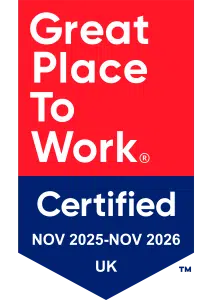The link between employee engagement and productivity

Engagement is one of those terms that gets repeated so often it risks sounding like corporate wallpaper. Yet when you strip it back to its essentials, the connection between engagement and productivity is difficult to ignore. Motivated, connected employees simply deliver more. Not because they are forced to, but because they want to.
In a climate where organisations are looking for every edge - whether through technology, efficiency, or innovation - employee engagement offers one of the clearest routes to sustained productivity gains.
Defining Engagement Beyond the Buzzword
Engagement is not just about job satisfaction, though that plays a role. It goes deeper. It is about the discretionary effort people bring - the energy they choose to invest once the basics of the job description are covered.
An engaged employee feels aligned with organisational goals, understands the value of their contributions, and experiences a sense of purpose at work. This psychological state creates a ripple effect: better collaboration, stronger resilience, and a willingness to go the extra mile.
Productivity as an Outcome
Productivity, on the other hand, is often measured in output - projects delivered, sales completed, customers served. But those metrics, while important, are downstream effects. They depend on the energy and focus people bring to their tasks.
When engagement is high, productivity tends to rise in parallel. Employees approach challenges with curiosity rather than resistance. They adapt more quickly to change. They maintain momentum even when setbacks occur. In short, engagement acts as the fuel, and productivity is the performance it powers.
The Role of Leadership
Leadership has a direct influence on this connection. Engaged employees often cite trust, clarity, and support from managers as key factors in their motivation. A leader who communicates openly, recognises contributions, and provides development opportunities strengthens the engagement–productivity link.
By contrast, inconsistent or opaque leadership creates disengagement, which in turn slows output. The lesson is clear: productivity initiatives cannot succeed in environments where people feel undervalued or ignored.
Culture and Collaboration
Engagement is not solely an individual phenomenon; it is also cultural. Workplaces that foster collaboration, inclusion, and psychological safety generate higher levels of engagement. When employees feel they belong, they are more likely to contribute ideas, share knowledge, and take initiative.
This cultural engagement translates into collective productivity. Teams move faster when information flows freely. Projects advance more smoothly when individuals trust one another. In effect, culture acts as the operating system that links engagement to performance.
Wellbeing as a Productivity Driver
There is also a wellbeing dimension. Engagement is strongly correlated with employee wellbeing - those who feel engaged report lower stress and higher levels of energy. In turn, wellbeing supports sustainable productivity.
This challenges the outdated notion that productivity is about working harder for longer. In reality, exhausted employees may produce less, regardless of how many hours they log. By contrast, engaged employees who feel supported can maintain higher levels of output without burning out.
Measurement Matters
Organisations cannot strengthen the engagement–productivity connection without measurement. Engagement surveys, pulse checks, and feedback loops provide valuable insights into how people are feeling. Productivity metrics, when interpreted thoughtfully, reveal how those feelings translate into outcomes.
The key is integration. Looking at engagement and productivity data in silos misses the point. Analysed together, they show the levers that truly make a difference - whether that is recognition, communication, or resources.
The Customer Connection
It is worth noting that the benefits extend beyond internal performance. Engaged employees provide better service, deliver stronger experiences, and innovate more readily. This has a direct impact on customers and clients.
There is a well-documented link between employee experience and customer experience. Engaged employees create positive interactions, which in turn foster customer loyalty and growth. In this way, engagement drives productivity not only within the organisation but also in its external impact.
Practical Strategies for Strengthening the Link
So what does this look like in practice? Some effective strategies include:
- Recognition and reward: Acknowledging effort and results reinforces engagement and encourages continued performance.
- Clear communication: Transparency about organisational goals and challenges ensures employees understand the context of their work.
- Development opportunities: Providing learning pathways and career growth strengthens long-term motivation.
- Flexible working models: Supporting autonomy and balance helps employees sustain engagement over time.
- Feedback culture: Inviting and acting on employee feedback builds trust and continuous improvement.
Each of these strategies strengthens the emotional commitment employees feel, which translates into higher levels of productivity.
Avoiding the Pitfalls
It is important to recognise that engagement cannot be manufactured through surface-level perks. Offering free snacks or occasional social events does little if employees lack meaningful work or fair recognition.
Equally, productivity initiatives that ignore engagement risk backfiring. Pushing for higher output without addressing employee motivation often leads to short-term gains followed by long-term decline. Sustainable productivity arises from a deeper, more authentic alignment.
Final Thoughts
The link between employee engagement and productivity is not theoretical. It shows up daily in the energy teams bring, the quality of their work, and the resilience they demonstrate under pressure.
For organisations, the challenge is not to choose between engagement or productivity but to recognise that one drives the other. By fostering cultures of trust, purpose, and support, leaders can unlock the discretionary energy that fuels performance.
In a world where competitive advantage often rests on people rather than products, understanding this link is not just valuable - it is essential.
